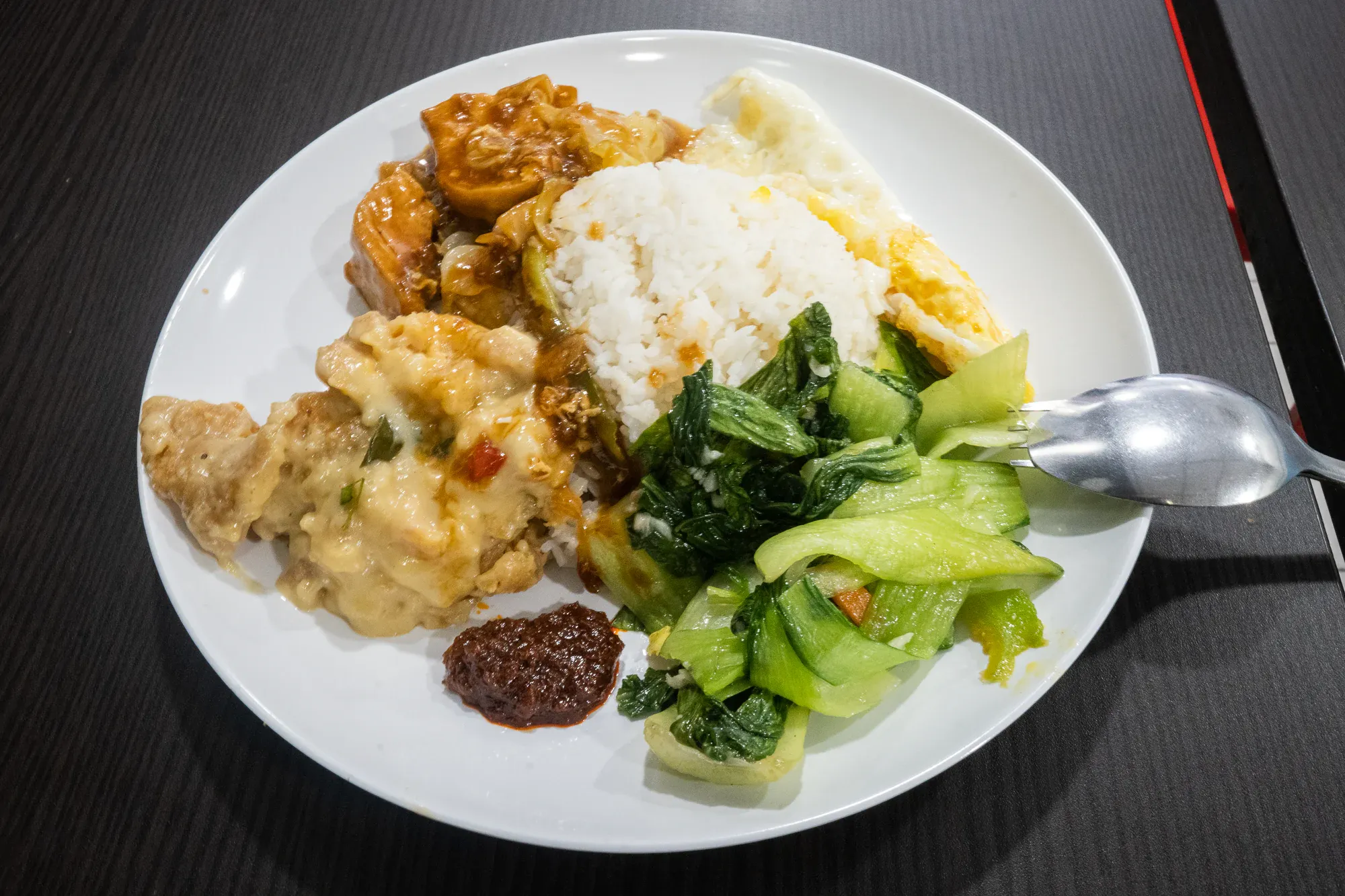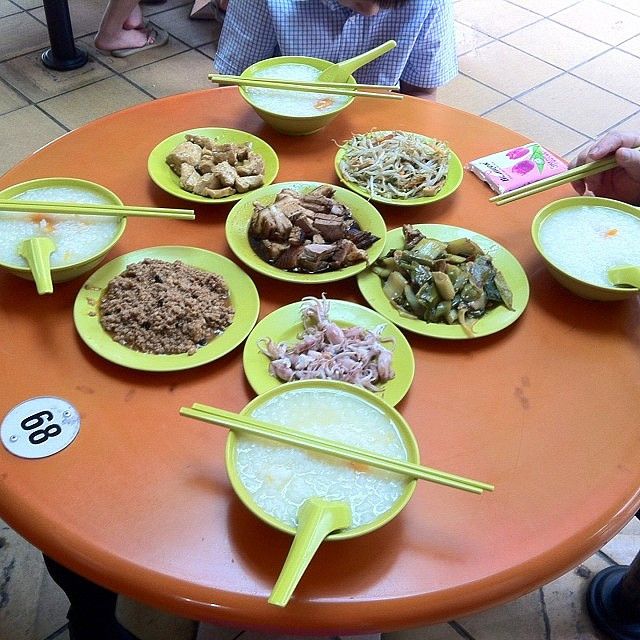Eat like a local: Explore Cai Fan
For your most local experience
If you are traveling to Singapore and looking to eat like a local, skip the restaurants, and head to the hawker centers or coffeeshops. There are a variety of options at the hawker centers and coffeeshops, most of them embodying what it means to eat local But if you are looking for a very local 'everyday' experience, perhaps what you should try is Cai Fan.

What is Cai Fan?
Cai Fan is a Chinese term that translates to "rice with dishes." It is sometimes also known as chap chye png (which means the same thing, except in Hokkien) or cai png (again, same thing, but in Hokkien). It is a customizable meal where you can choose your favorite ingredients to go along with a serving of steamed rice.
Cai Fan is in no way unique to Singapore; you see such meals across many Asian countries, albeit them possibly having different names. And if you are from the States, think Panda Express. (In fact, many Singaporeans visiting the States refer to Panda Express as essentially US's version of Cai Fan)
The concept of Cai Fan isn't at all unique, but it is probably the closest you can get to having an insight to the daily meals and palate of a local. While it definitely isn't home cooked, what you see being served at these stalls are things that you could actually see being cooked in a local Chinese home.
How to Order Cai Fan
Figuring out the dishes
Most Cai Fan stores will not come with a menu — the food will be on display through the glass window, and it's just assumed that you know what the dishes are. Not having a menu does make sense in a way, given that there isn't a fixed menu and the dishes that are available change from day to day. (And it is possible that, even on the same day, at different timings, you see different dishes).
If you are looking at something but not sure what it is — usually if you are trying to figure if it's chicken or pork — feel free to ask the store owners. They'll probably sound annoyed (they pretty much always do), but they'll let you know.

Decoding Cai Fan prices
Prices are not always the most transparent, and are not listed per dish. Instead prices are often based on combinations like “1 Veg + 1 Meat” or “2 Veg + 1 Meat”; so your meal is going to be charged based on the number of vegetable dishes and meat dishes that you are ordering. Of course, you are not going to be limited by the different combinations that are listed, though the charging model beyond what is listed isn't the clearest.
That said, even if you were to order based on one of the listed combinations, it is possible to get some surprises:
- You might think you have ordered a vegetable dish; but because some minced meat has been added to that dish, it counts as a meat dish.
- Fish does not count as a meat dish; and has a separate pricing on its own. It's usually expensive (especially since Cai Fan is supposed to be a budget meal). If you really want fish, it will be useful to ask what the prices are before ordering it.
- Chicken cutlets also fall into a similar category as fish — usually having its own price, and usually expensive. Same rules apply: ask what the prices are before you order it.
So when you are ordering your meal, the listed prices are a good estimate of how much you might expect to spend - but give yourself some buffer for prices to exceed that estimate. You will only know exactly how much you are paying after you finish ordering, but a typical cai fan meal will cost somewhere around SGD3.50 to SGD5. (Of course, if you are at prime locations, prepare to pay more for that)
Ordering Cai Fan
So, how do you order Cai Fan? It's simple, really — the store owners will usually start by asking if you were going to dine-in or takeout (also known as dabao At this point, this is when you let the store owners know if you wanted to have more (or less) white rice - adding more white rice doesn't usually come with extra charges, and you don't get a discount for less (though you reduce wastage if you know you can't finish). Some stores also have options of brown rice, porridge, or bee hoon — and you should let the store owners know at this point if you wanted one of those options. Otherwise, the default would always be white rice.
Also, it will be good to note that dishes are typically just added to the same plate of rice. But if you don't like your rice and dishes all mixed together, you could also request for them to put them separately.

Now that you have your base settled, you can go ahead and select your dishes. If you know what the dishes are (for example, if a dish is obviously broccoli), go ahead and order it by its name. But if you don't know how to refer to a certain dish, fret not — simply point, and say 'this' or 'that'. The storeowners will double-check with you before they add the dish to your plate.
And once you are done with your selection, they will sometimes ask if you wanted gravy — there are usually two options: curry or braised sauce. And if they don't ask, you can always still request for it. And we recommend that you do, because otherwise your meal might be really dry.
Common Cai Fan Dishes
While each store has its own array of dishes and no two stores will have the exact same menu, there are some dishes that are fairly common and you will almost definitely see in any store selling Cai Fan. These include:
- Sweet and Sour Pork (or Gu-lu-you)
- Steamed Egg with minced meat
- Popcorn Chicken
- Curry Chicken (or Curry Vegetables)
- Tofu
- Stir-fried cabbage
Alternatives to Cai Fan
If you are looking for local Chinese-style rice and dishes, but don't really want to go for Cai Fan, you can also consider going for Teochew Porridge. The concept is really similar to Cai Fan in that you get a staple and dishes. But in the case of Teochew Porridge, your staple would be porridge. By default, the dishes are also served in separate plates rather than all together in your bowl of porridge.

Or if you are just not in the mood for Chinese food, or you want something more flavourful, you can also consider getting Nasi Padang which is the also rice and and dishes, but instead of Chinese cuisine, it's Malay cuisine.